
Throughout the food and health industries, you will see a lot of contrasting information about grains.
Some say that grains are a type of filler ingredient, designed to fill you up despite not being nutritious. Others say that grains are an important part of your diet. Both of these concepts can’t be right, so what is the truth?
Today we will break down the myths and misconceptions of grains to give you a real insight into what grains are and how important they are to your diet. Nothing is truly black and white, but our information can help shed light on this confusing topic.
What are Grains?
Before we get started, we need to explain what grains actually are.
Grains are a type of seed. They are small, edible, hard, and dry. They also grow in grass-like formations. For example, wheat has a long yellow stalk with fluff at the top. These fluffy areas are where the seeds grow.
Almost every country in history has had its own connection with grains. The domestication of grains has been around for over 10,000 years. This means that people have been planting and harvesting these crops for generations.
Groups of people around the world making the same decision to domesticate grains must have understood something fundamental about this food source. Whether it was oats, barley, rye, or quinoa, these grains were used as a major source of carbohydrates – a source of energy.
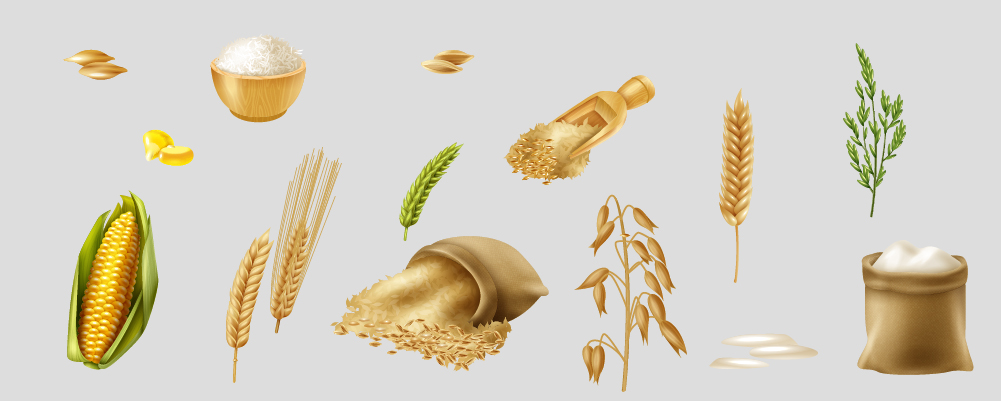
Grains don’t have to be used in their natural form. Instead, they are commonly turned into food types that are easier to eat or add more variety to our plates. For example, you may not eat quinoa, but you probably eat bread, pasta, pastries, or even crackers.
To create this list of food from grains, the seeds are crushed to make flour. When flour is mixed with other ingredients such as eggs or milk, new possibilities arise for the grain’s formation.
What Foods are in the Grains Group?
To help you understand what a grain might look like, we have gathered a list to explain in detail. This list is not definitive but should help you paint a picture.
Barley
Barley is one of the oldest grains in the world. It is critical in the creation of whiskey, but it doesn’t often present itself in other common food or drink. Instead, you might see barley in mass-produced food such as coffee substitutes, soups, or microwave food.
Oats
Oats are the most common grain to see in their grain form. Porridge oats are many people’s favorite breakfast cereal. It’s often squeezed to make oat milk. And it can be packed together with honey and nuts to create a cereal bar.
Quinoa
Depending on where you are in the world, quinoa might be a common sight. South Americans often use quinoa as often as Europe uses pasta.
Its texture is both chewy and fluffy at the same time, containing a lot of protein and color.
Rice
Rice has become a staple crop all over the world. Its origins started in Asia and are still considered the main choice in those countries.
There are many different types of rice, but they are all considered a type of grain.
Rye
Rye, like barley, is only used in specific situations. For this grain, those situations are bread, vodka, and whiskey. Rye bread (see also ‘Is Rye Bread Good For You?‘) is a popular choice for sandwich bread.
Wheat
Lastly, the most common of all is wheat. Wheat is used to make flour, which is the ingredient needed to create pasta, pastries, cakes, and more. It is a major source of carbohydrates for the human body.
Whole Grains vs. Refined Grains
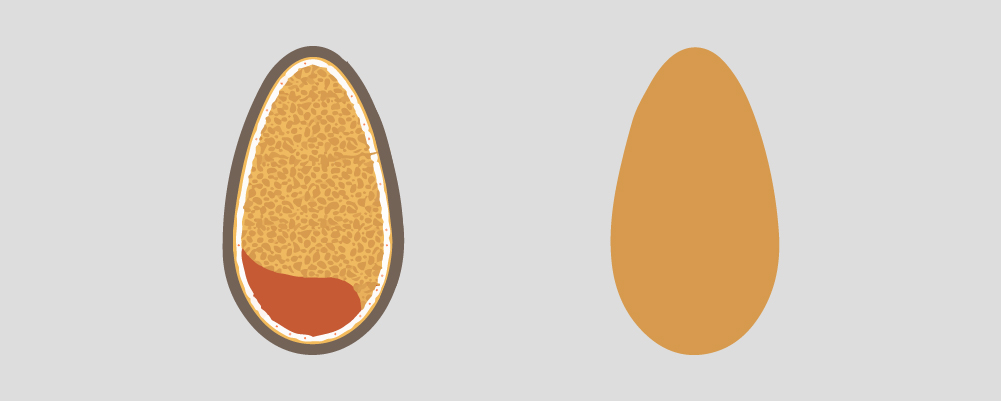
Grains can be classified into two types – whole grains and refined grains. Whole grain is considered the healthiest option. Let us explain why.
What is the Difference?
Whole grains are grains that haven’t been manipulated. Grains naturally consist of three parts – bran, germ, and endosperm.
The bran is the outer layer of the grain. This layer is high in antioxidants, fiber, and Vitamin B. It also has a special natural chemical called phytochemicals. These compounds can be found in plants and are used to help prevent diseases.
This means that the bran can help you break down glucose and maintain your blood sugar, due to the fiber. It can help your body break down fats and transport oxygen through vitamins. And lastly, it protects your body from diseases due to the antioxidants and phytochemicals.
Germs aren’t nasty bacteria in this context. They are the nucleus of the grain, containing rich fats, Vitamin E, Vitamin B, antioxidants, and more phytochemicals. Vitamin E helps to maintain your skin and eye health, while the rich fats give you energy and support cell function. The endosperm is where all of the starchy carbohydrates live. This is where the majority of the energy we intake comes from.
Refined grains, however, remove the bran and germ. This means they only have the endosperm left. Refined grains have less fiber and less nutritional value than whole grains. Some grains become “enriched” by adding nutrients back into the grain, however, they do not reach the high value expected from whole grains.
How to Identify Whole Grains
Whole grains will continue to have their outer shells. It’s these shells that create a brown color. You can normally tell if a food type was created with whole grains or not by simply looking at the colors. Brown bread, for example, is mostly made out of whole grains.
You can also figure out what food types are made with whole grains by looking at the packaging. On the label, it will either say whole grain, refined grains, or enriched grains.
How to Identify Refined Grains
Refined grains are often white. When the outer shell of the grain has been removed, and the inner nucleus has been taken away, all that’s left is the white endosperm center.
In the late 1800s, refined grains were first created. They were made through the new milling techniques of the industrial revolution. The technique changed the texture and extended the shelf life of the grains. The smooth texture was an instant hit, and the long shelf life meant less worry about waste or mass production.
However, it didn’t take long for scientists to realize that refined grains were less nutritious. In the 1940s, enriched grains were invented so that soldiers could have long-life rice and bread while still absorbing the nutrients they needed.
In 1998, the US changed its laws so that all refined grains had to be fortified with folic acids. This means that they aren’t completely enriched but they contain more than the endosperm could provide alone.
To identify refined grains, simply look for grain-based ingredients that are white and/or smooth. They will also say refined, enriched, or fortified on the packaging.
How to Incorporate Whole Grains Into Your Diet
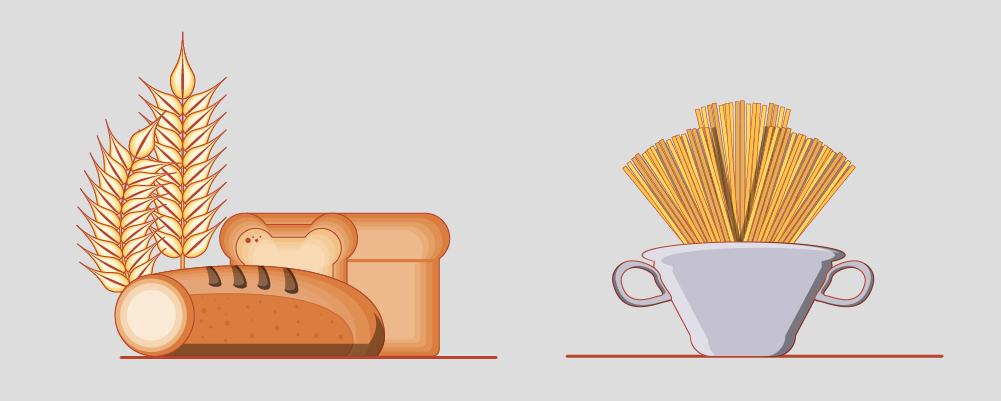
In the 80s, the US Department of Agriculture suggested that everyone should eat 6-11 servings of grains every day. The concept of a portion wasn’t very well explained, but the farming industry essentially said we should eat more grains than any other food group.
Some argue that this information was suggested due to scientific data which we can now debunk, but many people believe that because farmers in the US grew grains more than anything else, this was a marketing ploy.
Regardless, we don’t need to eat as much grain as we once believed.
Grain Daily Intake
The amount of grains you should eat a day depends on your sex and age.
Children between the ages of 2 and 8 should eat between 3 and 5 ounces of grains a day.
However, from the ages of 9 upwards, females should be eating between 5 and 6 ounces of grains daily, while males should be eating between 6 and 8.
Of course, these figures don’t take into account disabilities, level of physical activity, and natural variations. That means you shouldn’t take these figures as rigid facts.
To help you understand what an ounce of grains might look like, use this equivalency comparison as a guide:
- 1 slice of bread
- 1 large pancake or 2 small pancakes
- Half a cup of cooked pasta
- 1 bagel
- 3 cups of popcorn
- 1 cup of cereal
- Half a cup of cooked oatmeal
- 1 tortilla
Try Whole Grain Pastas
At least half of the grains you eat daily should be whole grains. This is because the amount of nutrients you will receive from the complete grain far outweighs any benefits of refined grains. To help you get whole grains into your diet without changing the way you eat, you can simply swap your cupboard stapled with whole grain alternatives.
A great example of this is pasta. Most people buy refined grains due to their long life and smooth texture. Pasta, however, doesn’t lower its long life when created as a whole grain and it is still smooth.
It will have a slightly different taste, however, because most pasta dishes are created with rich and flavorsome sauces, you probably won’t notice the difference. We suggest making this change first, to see if you can easily add whole grain into your diet through pasta.
Include More Oats in Your Diet
If you don’t eat pasta often, or if you tried the pasta option and decided it wasn’t for you, try to add more oats to your diet. Oats are a great breakfast option as they are filled with carbohydrates that can power you through the day. Many parents will give oats to their young children, knowing that they need a lot of energy to get through the day to make it to the next meal.
The same can be said for adults, as the rush to work should be powered by a hearty meal beforehand. If oatmeal as a breakfast option doesn’t sound appealing, you can use oats in smoothies instead.
The oats act as a thickener, so simply add in all the flavors you hope to achieve, blend it all together, and you’ll have created a beverage that is tasty and filled with whole grains.
Smoothies can be eaten as a treat at the end of the day, but if you need a snack halfway through your workday schedule, try an oat cookie. Dunk them in chocolate for a delicious flavor and delightful crunch.
Replace White Rice With Brown Rice or Quinoa
White rice, just like white pasta, is a cupboard favorite in most households. However, swapping from white rice to brown rice is an easy way to get whole grains into your diet. Unlike pasta, rice isn’t normally covered in sauce. This means that the change in flavor might not feel as natural or undetectable in your rice dishes.
To create a brown rice recipe, you want to focus on flavors that are earthy or green. Garlic, broccoli, and soy sauce can be a perfect combination with brown rice as their overall taste will feel rustic. However, if you use rice in a bag or microwaveable rice, you might reject brown rice due to the lack of quick cooking comparisons. If you need that speedy cooking time, we suggest picking up quinoa instead.
This grain only takes 10 to 15 minutes to cook and doesn’t require a cleaning period beforehand. One reason why rice takes so long to cook is due to that extra cleaning process, which washes away the excess starch. With quinoa simply dump the grains into a pot and start cooking!
Add Whole Grains to Your Cooking
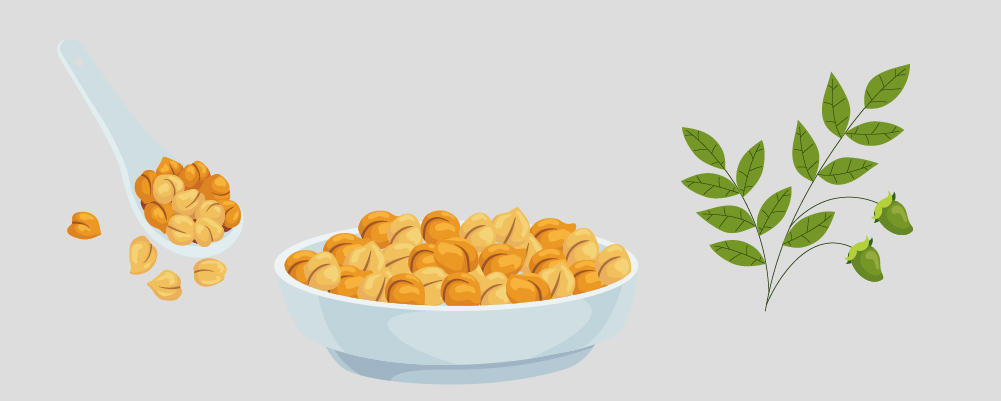
If you don’t eat rice or pasta then our advice so far might seem unhelpful. But if you are reading this article, then we know that you already want to make a change. This is your call to look at your diet and start thinking about how it can change. If you mostly eat carryout or pre-packaged meals, then you should make a new food plan.
Once a week, have a meal that contains grains. As you’re just starting out, make the meal an easy one. Perhaps there is a sandwich shop on your way to work, pick up something for lunch but ask for whole grain instead of white bread.
Instead of cooking the pasta sauce from scratch, start out with a jar of pre-made sauce. This will make the process less overwhelming as you start your cooking journey. Little steps are all that’s needed to get the process started. Once you feel comfortable with one change, add another day of grains to your week.
Try Whole Grain Cereal
There are lots of cereals on offer at your local food store. You’ll find some are chocolate flavored, some are covered in sugar, and some are marketed as healthy.
If you normally buy cereals based on their fun designs or preferred flavors, try and take a step back. Look at the ingredients on the box and check if they contain whole grains or not.
A lot of family favorites are already made of whole grains, such as Cheerios. Others have whole grain options, allowing you to still enjoy your favorite designs or flavors but with healthier ingredients.
However, you could change your cereal selection altogether. Muesli, bran flakes, shredded wheat, corn flakes – these are classic cereals that we all know about, but most of us avoid. We want to eat the newest cereal brand or explore fun colors, shapes, and intriguing flavors.
Heading back to the classics could be the perfect way to add variety to your breakfast table. For all you know, one of these brands might be a surprising favorite.
This doesn’t mean you should never touch your chocolatey favorites ever again. But adding this cereal to the table can give you some variety in your mornings.
Increase Your Corn Intake
Popcorn, corn on the cob, sweet corn, cornbread. Corn is a wonderfully versatile vegetable that is already a major part of many American meals.
Snacking on popcorn instead of chips can help increase your fiber intake without denying yourself a snack. Adding corn on the cob to your summer BBQ can increase the color of your plates. And eating cornbread can bring that feeling of home with you anywhere you go.
Two of the best things about corn are how cheap it is, and how it can fit in almost any meal. If you’ve made a salad, simply open up a can of corn and sprinkle it onto the greens. If you’re making a pasta dish (especially one based on a white sauce), corn will instantly match the flavors you are already creating.
Corn is a tinned grain that you should always keep in your pantry. That way you can easily chuck a couple of kernels into your meals without a second thought.
Nutritional Benefits of Grains
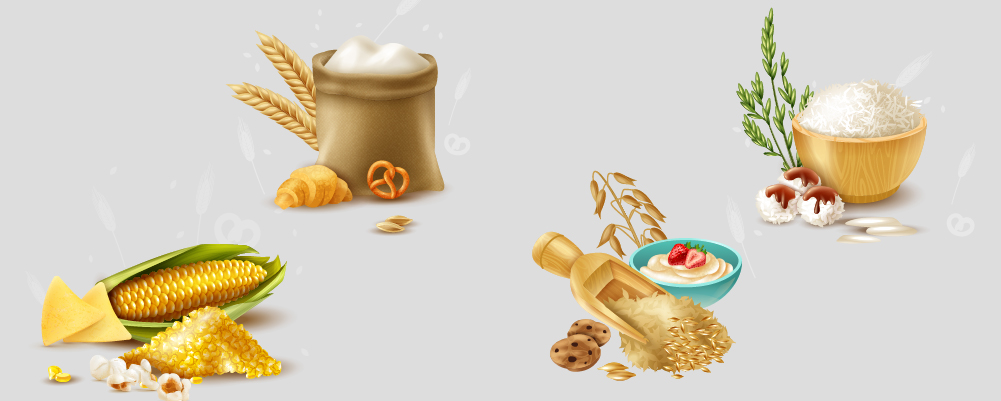
We have briefly explained why whole grains are better for your health than refined grains, but here is the science behind why.
Maintains Steady Blood Sugar Levels
Whole grains are so good at helping to maintain your blood sugar levels, that diabetes-focused charities often suggest eating this food group. This is because whole grains contain a lower glycemic index.
In a 2002 article published in the American Journal of Clinical Nutrition, scientists tested the rate of insulin growth in subjects that eat whole grain meals and subjects who ate refined-grain meals. The results showed that whole grain had a profound effect on people with insulin sensitivity and helped to reduce the risk of heart disease and type 2 diabetes.
A 2021 study looked into the reason behind this discovery and found that oats or whole grains were able to interfere with starch hydrolysis and release more glucose into the system. This increases the viscosity. In layman’s terms, this is the reason why the glycemic index is low.
The glycemic index is the chart that shows which food raises your blood sugar. The reason for the reduced glycemic index in whole grains comes from the enzyme found in the germ section of the grain.
Fiber Helps Lower Cholesterol
Cholesterol is a natural product from your liver. You need it to maintain the structure of your cell membrane. However, Cholesterol doesn’t travel through the bloodstream very well due to the fat-like texture.
Fat isn’t soluble. Because of this, you shouldn’t have too much cholesterol in your bloodstream, otherwise, it can clog your arteries. This is where fiber comes in. Fiber is a type of nondigestible carbohydrate. This means that it is absorbed in your digestive tract and cannot be used to create energy.
When you eat fiber, you naturally slow down the digestion process. This stops you from getting hungry and gives your body enough time to regulate the use of sugar in your blood. It also traps the cholesterol and stops your body from reabsorbing the additional fat.
The fiber in wholegrain is special. It is soluble which means that the body can absorb the nutrients it provides while also helping to lower cholesterol. Eating 70 grams or 1 cup of oats every day for 4 weeks can lower your total cholesterol by 8.1%. That number might seem low, but it is significantly higher than any other fiber-based food group.
Provides Essential Minerals
Whole grains have a plethora of nutrients and minerals which are needed in your diet. The main minerals are iron, selenium, and magnesium.
Iron is an essential nutrient in our diet. Without it, we may feel lightheaded or may even develop extreme fatigue. This is because iron is a major contributor to our hemoglobin and our myoglobin. Hemoglobin is a type of protein found in red blood cells, and it carries oxygen from our lungs to the rest of our bodies.
Myoglobin is a type of protein that stores oxygen in muscle tissue. When our brain, and limbs need more power, they will extract oxygen (as well as other important materials) from the myoglobin to keep going. When the body needs to repair from a workout, growth, or anything else, it will also extract oxygen from the myoglobin.
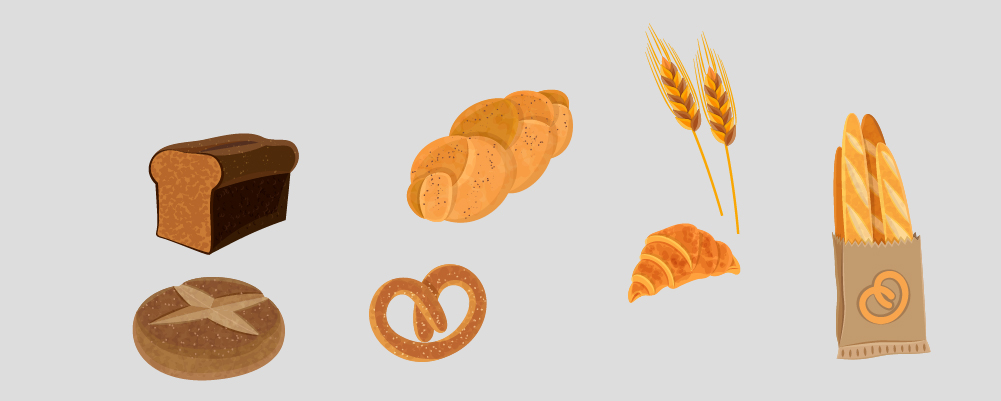
Because our body relies on hemoglobin and myoglobin to distribute and store oxygen, and iron is imperative to create these proteins, without it our ability to move and stay energetic will be decreased. The bran is where the iron is stored, which is why whole grain provides the essential minerals and refined grain doesn’t.
Selenium is found in the germ, which, again, is only found in wholegrain. Selenium is an essential part of our enzyme and protein structure called selenoproteins. It helps to create DNA and protect against infections and cell damage.
If we don’t have enough selenium in our diet, we can become infertile, develop heart diseases or take longer to heal from damage and infection.
Lastly, magnesium is found in the bran, which is only found in whole grains. Our body needs this mineral to connect nerve tissues and support muscle growth. Having low levels of magnesium will not cause dramatic issues to a person’s health, however consistent or extreme deficiencies can cause a loss of appetite, nausea, and fatigue.
These three minerals are essential in our diet and are needed to keep us healthy. But all three of these critical minerals are only found in whole grains – not refined grains.
Provides Complex Carbohydrates
In the last section, we discussed the essential minerals and now we are going to discuss a major essential nutrient – complex carbohydrates.
Simple carbohydrates are sugars in their various forms. Complex carbohydrates contain sugar but they also include a good helping of fiber and potassium. We have already discussed the importance of fiber, so let’s move on to sugar and potassium.
Sugar or glucose is the number one food we need to power our brains. Without it, you can experience mental fog, headaches, and fatigue. However, if you have too much you can end up gaining weight, and developing diseases such as cancer and heart disease.
To make sure you are eating the right amount of sugar, you should avoid sugary sweets and instead eat food with mild amounts of natural sugar – such as grain-based foods.
Your body uses potassium to maintain fluid levels inside cells. If you don’t have enough potassium, your cells will have too much pressure from the fluid levels which can cause higher blood pressure. With this particular issue, you can develop kidney stones.
Refined grain does contain sugar, but it doesn’t contain potassium.
May Lower the Risk of Heart Disease
Because of the wonderful minerals and nutrients in whole grains, your body will be able to monitor and balance its blood sugar, cholesterol, digestion, and cell growth. Swapping from refined grains to whole grains can mean making this positive change to your body without changing your day-to-day life.
Because blood pressure will be eased due to the fiber and iron and the cholesterol becoming balanced due to fiber, this means your blood flow will be less likely to clot.
If blood clots in the arteries leading to the heart, then it will cause a heart attack. Reducing this likelihood by balancing your body’s nutrients, means lowering your risk of heart diseases such as heart attacks.
Fiber Can Help With Bowel Function
We have sung the praises of fiber a lot already, but the positivity doesn’t stop here.
As we said before, there are two types of fiber – soluble and insoluble. When it comes to bowel function, insoluble fiber bulks up your stool which allows it to “brush” through your bowels, helping to keep your lower intestine moving.
Soluble fiber removes the water from your stool, which can help prevent diarrhea. This makes your stool easier to pass. Depending on your situation, you may want the grains to remove your constipation or prevent loose stools. For constipation eat whole grain wheat, for loose stools, eat whole grain oats (see also ‘Can You Eat Raw Oats?‘).
For either of these grains to have a positive effect, they need to contain fiber which means avoiding refined grains and eating whole grains.
Summary

The main points to take away are the dramatic differences between whole grains and refined grains. Whole grains are by far the healthiest option, as they contain all of the nutrients and minerals we need to live a healthy life.
Refined grains, however, have had the majority of these nutrients removed to create a smoother and white alternative.
At least half of your daily grain intake should be whole grain, and an adult should eat between 5 and 8 ounces of grains every day. That equates to 5 to 8 slices of bread or 2.5 to 4 cups of cooked pasta.
Frequently Asked Questions
Have more questions? We have more answers!

What is the Healthiest Grain?
The healthiest grain is whole grain oats. They are naturally gluten-free, contain all of the vitamins and minerals mentioned above, and can help with weight loss due to their filling traits.
Oats can be made into pancakes, eaten as oatmeal, or turned into colorful overnight oats.
Is Pasta a Grain?
Pasta is made out of grains. So are bread, cereal, and tortillas. Rice, corn, and oats, however, are grains without anything else added to them.
You often need to create pasta, bread, and cereal, by including milk and eggs in the flour grain. However, bread like sourdough only requires flour, water, and sale. Rice, corn, and oats, however, do not need anything else added to them.
Is a Potato a Grain?
Potatoes are not grains. They are vegetables. Although potatoes can be small and can act like a seed, they are not dry and their leaves do not act like grass.
Potatoes are gluten-free and filled with starch which makes them a healthy alternative for those with celiac disease.
Which Is The Best Grain For Losing Weight?
Whole grain oats and whole grain brown rice are the best grains to help you lose weight. This is because they both have a filling quality while still giving you the nutrients and minerals you need.








